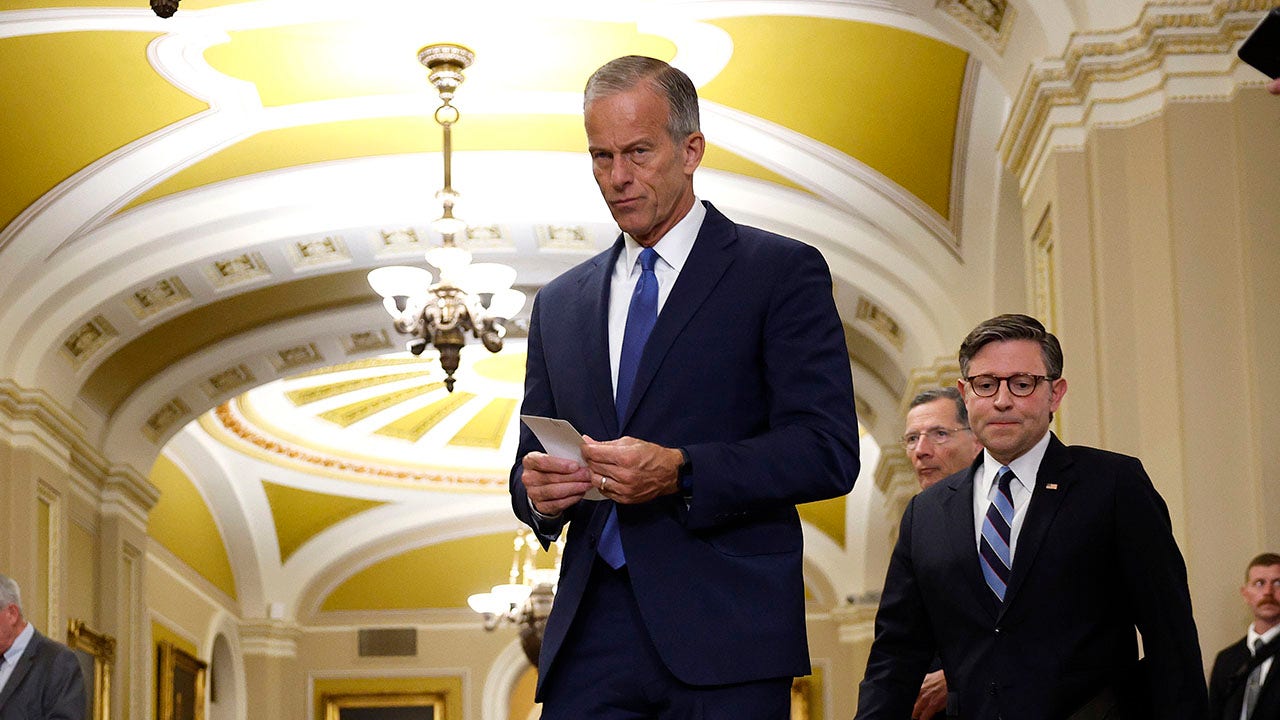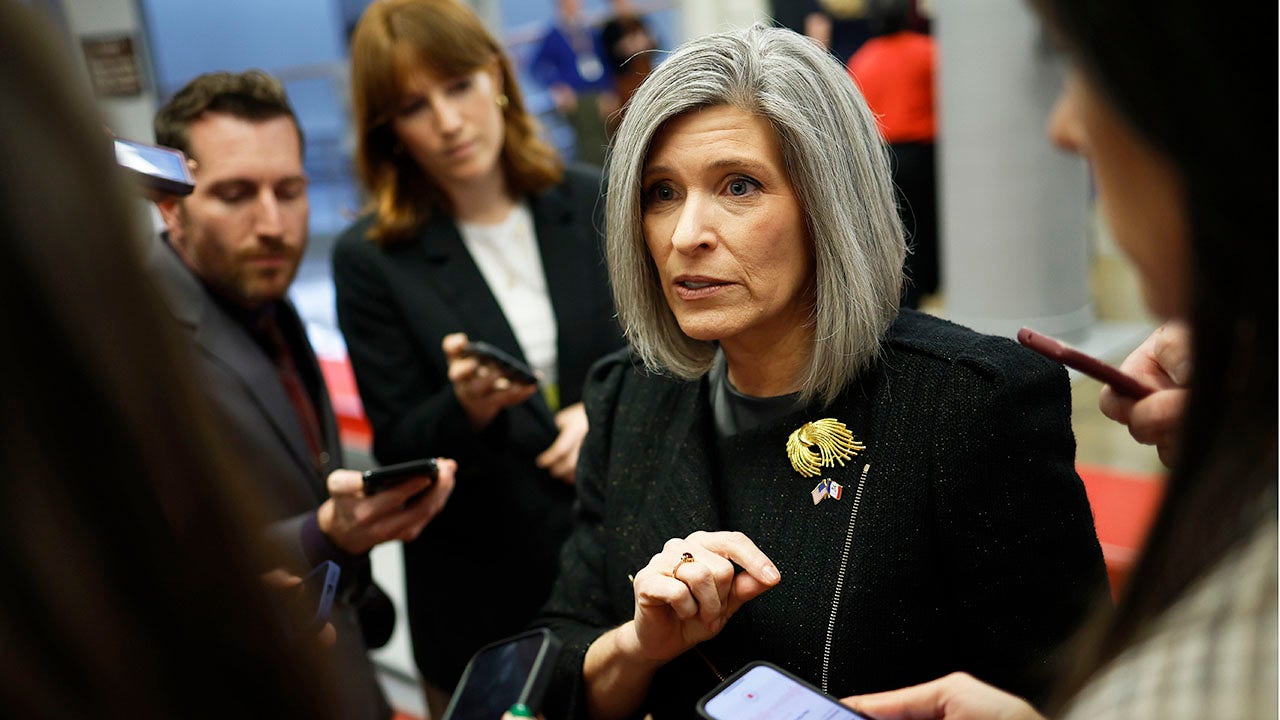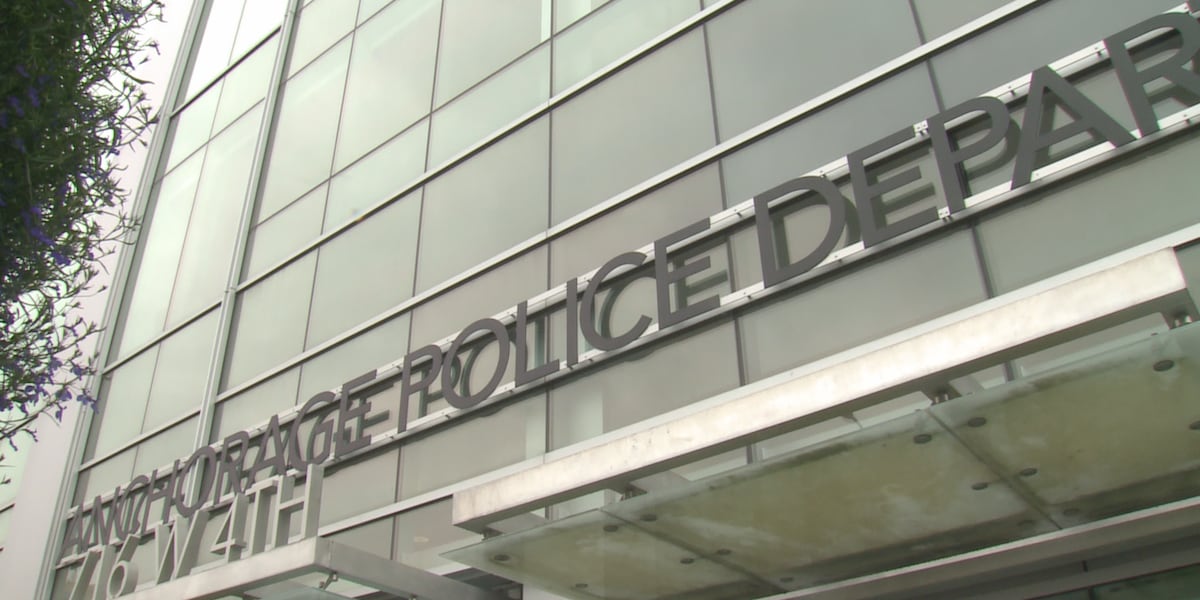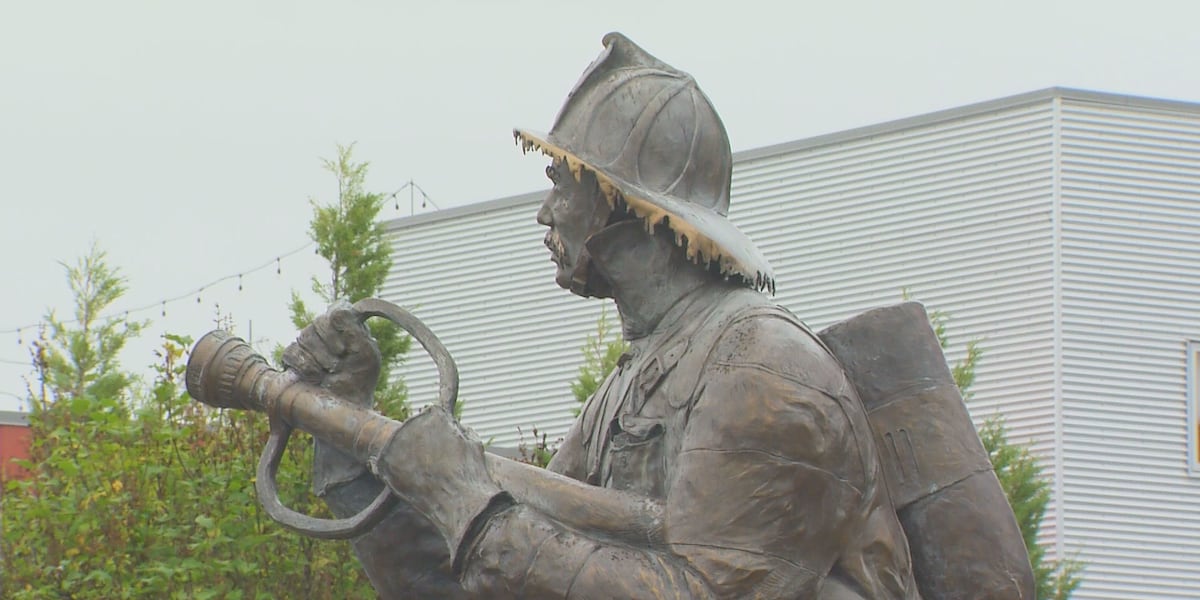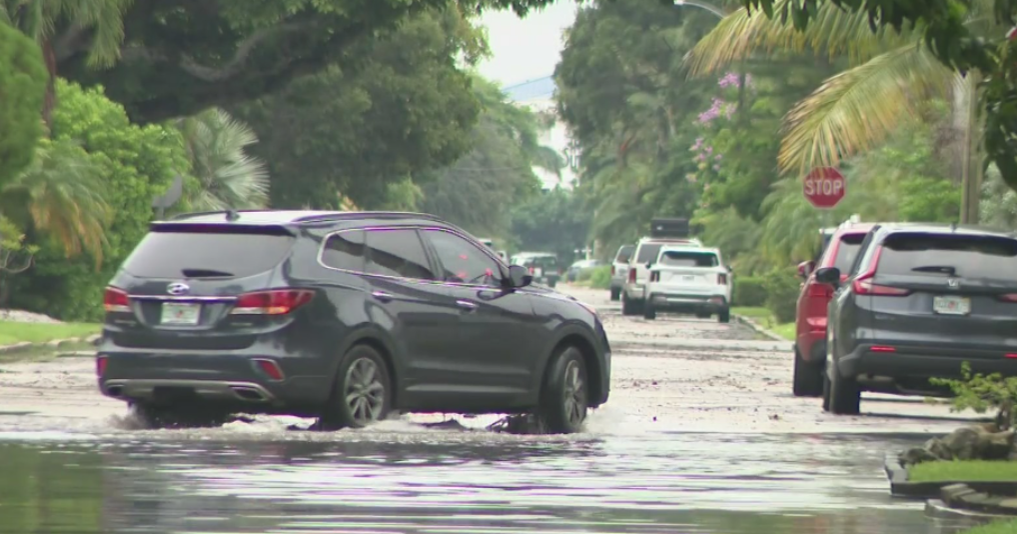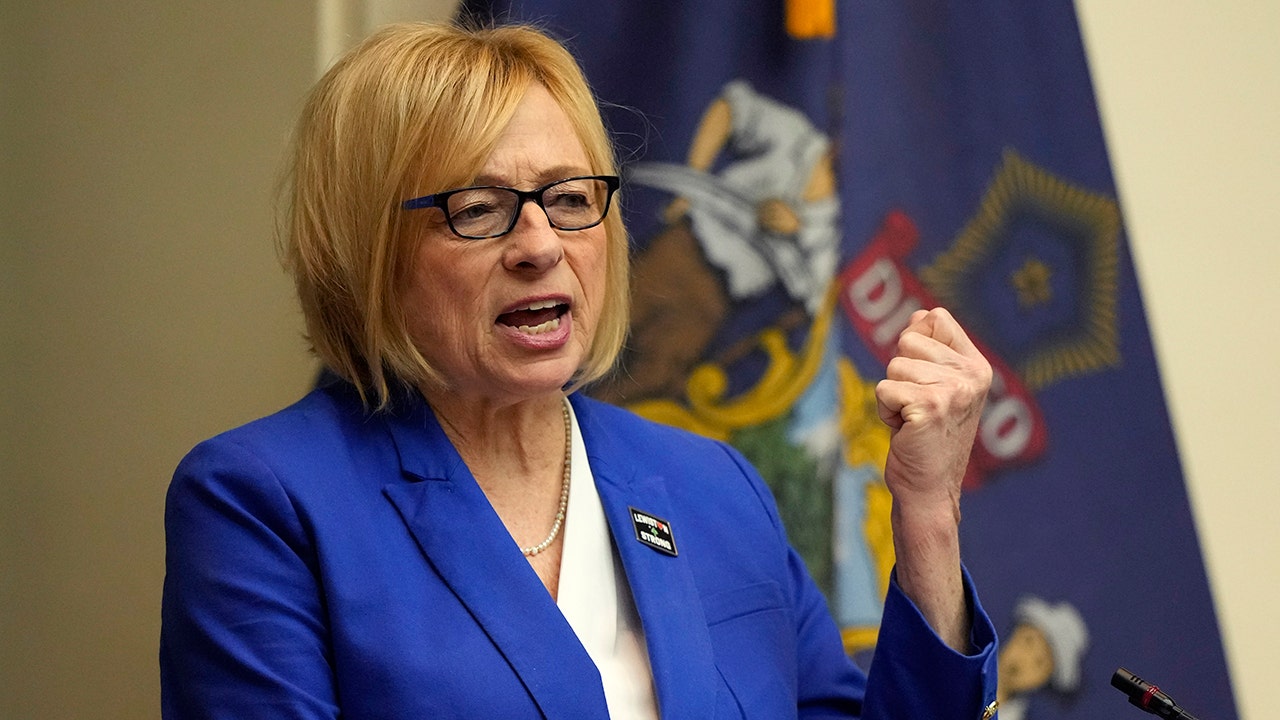Alaska
Alaska federal workers brace for potential layoffs
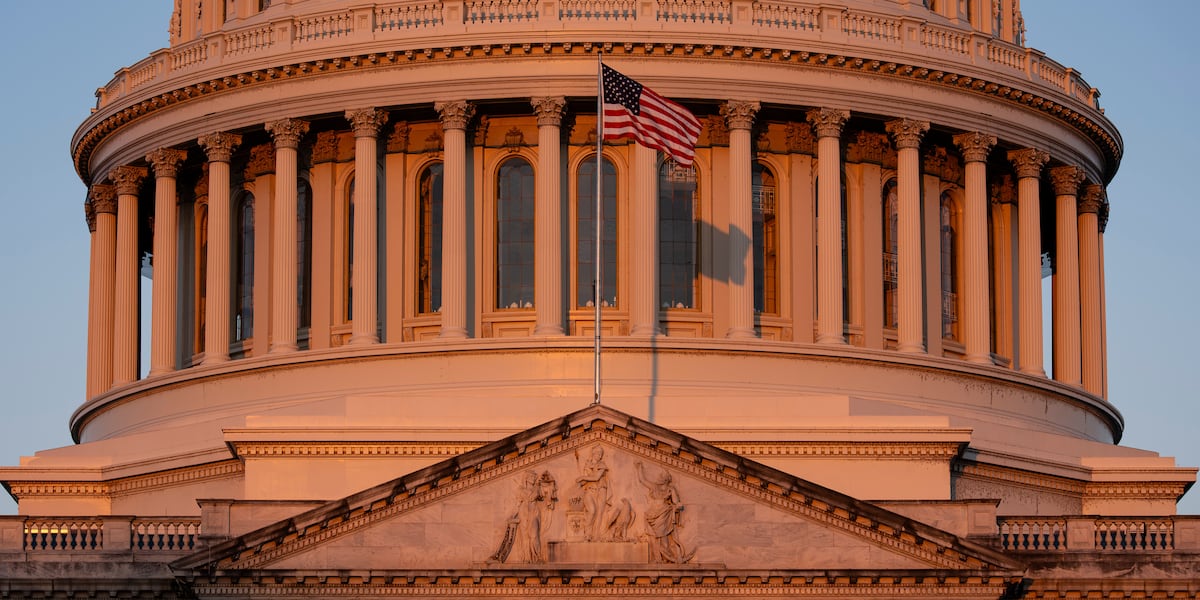
ANCHORAGE, Alaska (KTUU) – Federal workers across Alaska are bracing for potential layoffs on top of missing paychecks, as union officials warn that up to 200,000 federal employees nationwide could lose their jobs permanently during the ongoing government shutdown.
Based on union estimates and federal employment data, Alaska could see about 799 federal workers laid off if the cuts are distributed proportionally across states.
“There are a lot of people afraid,” David Owens, American Federation of Government Employees national representative, told Alaska’s News Source Thursday, describing President Donald Trump’s layoff threat at the time.
“They’re very worried. They feel like they’re being pawns, and they’re tired,” Ownes.
The threat comes after about 280,000 positions from the federal workforce were cut by DOGE, according to reporting in July by CNBC.
Now, Owens said the government could be looking into cutting 150,000 to 200,000 more positions.
A spokesperson for the Office of Management and Budget told the Associated Press the reduction would be “substantial,” but did not offer more immediate details, including how many federal employees would be laid off.
According to Office of Personnel Management data, Alaska has 11,658 federal employees as of September 2024. If the 200,000 layoffs nationally that Owens cited is accurate, and federal employment data shows the country currently employs approximately 2.2 million civilian federal workers, about 9.1% of federal employees would be laid off.
If that percentage was applied equally in each state, about 1,052 federal employees in Alaska may be laid off.
Court filings from the AFGE currently highlight 4,000 employees will be laid off, but also states, “Other Defendant agencies (in addition to some of those agencies identified above) are actively considering whether to conduct additional RIFs related to the ongoing lapse in appropriations”
Several impacted agencies reportedly include departments of the Interior, Homeland Security, Treasury, Education, Energy, Housing and Urban Development and Health and Human Services, as well as the Environmental Protection Agency, according to NBC reporting citing an anonymous official.
The president said Friday he would target firings towards those aligned with the Democratic Party.
“It’ll be a lot of people,” CNN reports he said. “I must tell you, a lot of them happen to be Democrat oriented.”
Interior Secretary Doug Burgum told Alaska’s News Source last week he didn’t expect his department to be hit hard.
“I don’t expect it to necessarily, but if that’s what it comes to, … we do have an effort underway still to try and find more efficiency in how we deliver services,” Burgum said, referencing the DOGE initiative.
For Alaska federal workers, the uncertainty is taking a personal toll, Owens said.
“I’m really worried about some of them because they live paycheck to paycheck,“ Owens said. ”We have some employees … that don’t make much money, and it really causes an impact on them.”
CBS Justice Correspondent Scott MacFarlane told Alaska’s News Source Friday it could be days, if not weeks, until there’s a full understanding of what type of layoffs are being executed.
“There’s still some sense that this may be more threat than reality,” he said. “Nevertheless, the administration continues to leverage this, saying they’re going to proceed with layoffs eventually or more layoffs eventually unless the government reopens, which begs the question, where are the negotiations in the effort to reopen the government?”
MacFarlane said any interruption in pay could be “cataclysmic to the family budget and life-changing,” something Owens reiterated was a phenomenon not uncommon in Alaska.
Prior to the shutdown, the Office of Management and Budget released a memo saying agencies should consider a RIF for programs whose funding would lapse during the shutdown and weren’t “consistent with the president’s priorities,” the Associated Press reported.
MacFarlane called the president’s calculus behind the move “unclear.”
“There may be a political advantage to wielding layoffs or at least threatening them,” he said. “Perhaps it’s leverage to end a government shutdown that the Republicans believe they can’t end without the Democrats’ help.
“The other component, though, is when you lay off federal workers, especially in our area, you do impact the services people receive. It is more difficult to get what you pay your tax dollars for when there are fewer federal workers to complete it.”
The White House has not released a statement on the shutdown as of publication, nor has the Office of Management and Budget. The layoffs also come the same day federal employees are set to receive their last paycheck, valid for the hours they worked prior to the shutdown, according to the U.S. General Services Administration.
Alaska’s News Source reached out to the entire congressional delegation and the governor’s office for comment on the push from the White House to lay off federal employees.
Alaska’s congressional delegation is already pushing back on the layoff threat. Sen. Lisa Murkowski, R-Alaska, criticized the administration’s move on social media Friday.
“While few details have been shared about Russell Vought’s latest layoffs, there is no question this is poorly timed and yet another example of this administration’s punitive actions toward the federal workforce,” she said. “The termination of federal employees in a shutdown will further hurt hard-working Americans who have dedicated their lives to public service and jeopardize agency missions once we finally re-open the government.”
A spokesperson for Sen. Dan Sullivan, R-Alaska, deferred comment to a statement saying he is working with the Trump administration to “lessen the impacts to Alaskans that result from the shutdown,” blaming the shutdown on Senate Majority Leader Chuck Schumer, D-New York.
Ten days later, little has changed
Republicans say Democrats have refused to pass what they call a “clean continuing resolution” in the Senate, a bill that maintains current government spending levels without policy changes or additions.
If the resolution receives 60 votes, it will end the government shutdown. With almost all Republicans voting for it (Sen. Rand Paul, R-Ky., cast the lone no vote), Democrats would need to provide the remaining votes.
Democratic leaders dispute that characterization, arguing the Republican bill isn’t truly “clean” because it ignores Democratic demands to restore nearly $1 trillion in Medicaid cuts and extend enhanced Affordable Care Act tax credits set to expire Dec. 31. Democrats say the credits would preserve health insurance for 3.8 million people.
If the Senate doesn’t pass the current resolution, Congress would need to introduce and pass a new resolution through both chambers. The president would then need to sign the proposal for it to become law.
See a spelling or grammar error? Report it to web@ktuu.com
Copyright 2025 KTUU. All rights reserved.

Alaska
As ICE arrests surge in Alaska, advocates step up to support detainees

Jessica Sunigaq Ullrich was at home last week waiting for a contractor to come fix her countertops when she heard yelling outside. She stepped out to see what was happening.
“I was definitely concerned,” Ullrich said. “And it wasn’t long after that I saw them walking this young man wearing a red hoodie towards a vehicle.”
The man Ullrich had hired is one of at least 56 people detained by U.S. Immigration and Customs Enforcement in Alaska so far this year — more than the previous two years combined. There were a total of 13 ICE arrests in Alaska in 2024, while there were 20 in 2023, according to the Alaska Department of Corrections. The dramatic increase comes as the Trump administration intensifies its nationwide crackdown on immigration.
Wesley Early
/
Alaska Public Media
Some residents, like Ullrich, say the surge in arrests is deeply troubling and they’re stepping up to support detainees. Ullrich said while she had heard about ICE officers arresting people across the country, she was shocked to see a detention up close. She recorded it and posted the video to Facebook, where it was shared hundreds of times.
“It felt like I was watching a government-endorsed kidnapping, essentially,” Ullrich said. “And I couldn’t believe, I didn’t feel prepared for what I was witnessing in Anchorage, Alaska, in my neighborhood, in my front yard.”
Anchorage immigration attorney Nicholas Olano said he expects the number of ICE detentions in Alaska to balloon as the agency receives billions more in federal funding.
“This is the horrible and sad truth is that those pickups and those arrests are following the law as it is written,” Olano said. “And if we are shocked by this, we need to change the law.”
In the meantime, he said there are ways people can support detainees including following Ullrich’s example by recording arrests.
“That’s great because we’re holding everybody accountable,” Olano said. “These officers, we’re making sure that they’re doing their job right, that they’re not pushing or abusing somebody.”
Olano said public advocacy is another way to garner support for detainees.
The day after Ullrich posted her video, she attended a shareholder meeting for the Bering Straits Regional Corporation. She told fellow shareholders about her concerns over the corporation’s investment in Global Precision Systems LLC, a company affiliated with several ICE detention centers in Texas and Arizona.
“I felt compelled to share what I witnessed,” Ullrich said, “and to ask at the annual meeting that was scheduled for the very next morning if we as shareholders and whether the board of directors could consider divesting from companies like this that are profiting off of what feels like the torment of human beings.”
Ullrich said she wonders if the topic of Native corporations divesting from detention centers should be raised at the Alaska Federation of Natives convention next week.
“I’ve been informed there are multiple Alaska Native corporations that are connected with detention centers,” Ullrich said. “And that’s an issue, I feel like, in terms of that alignment with values and us ensuring that we’re not part of the harm of our Indigenous relatives from Central and South America.”

Wesley Early
/
Alaska Public Media
Olano said financial support is another critical way to support detainees and their families. Since July, he has represented the family of Paola Guzman, a housecleaner who was detained by ICE in Anchorage and sent to a detention center in Tacoma, Wash. Guzman’s son, Aldo Coyotl, said his mother has lived in Alaska for more than 20 years and, one day in July, several cars barricaded her in as she parked, on her way to a cleaning job.
“Once you know it, all of them are around her,” Coyotl said. “And so she’s just in her car, terrified, and when they knock on her window, they show that they already have a court order and that they have her warrant for her arrest.”
Olano said Guzman did not have proper immigration documents. He said ordinarily, people who have been detained for entering the U.S. unlawfully would be able to post a bond to get released, but he ran into issues trying to pay Guzman’s bond.
“We ran into a new policy by the Tacoma immigration judges of denying bond for people who had crossed the border in the United States at any point,” Olano said. “This was something completely new.”
Olano challenged the judge’s decision that Guzman couldn’t post her bond, and a court ruled in her favor last week. All the while, Olano said legal and other associated fees made the ordeal expensive.
“A call from the Tacoma Detention Center is $8 a minute,” Olanos said. “These rates are not even 1980s long distance rates. That’s absurd.”

Wesley Early
/
Alaska Public Media
In order to help support Guzman, her friend Rebecca Rogers started a GoFundMe to help cover some of those fees. Rogers has known Guzman for more than 20 years, and said she’s a valuable community member.
“She was a hockey mom, a school mom, involved in her church,” Rogers said. “And I just grew to care for her very much.”
Rogers said she hopes that residents realize the hardships their fellow community members are going through.
“I think if people are paying attention, they realize that the people we care about, many of them who may not have their paperwork in place, are just vulnerable to a pretty vindictive, kind of crazy, insane system,” she said
The $16,000 raised in the online fundraiser, in part, helped to cover Guzman’s legal fees and bond.
Guzman was reunited with her family in Anchorage this week. Olano said Guzman will still have to appear before an immigration judge to hear her case, and he expects the process will take years.
Alaska
Government shutdown: Alaska’s 14,000 WIC families to receive funding through October, Murkowski’s office confirms

ANCHORAGE, Alaska (KTUU) – The USDA has allocated $300 million to keep Alaska’s Women, Infants and Children program, known as WIC, running through October during the government shutdown, Sen. Lisa Murkowski’s office confirmed to Alaska’s News Source Thursday.
“Senator Murkowski was relieved that USDA has found the funding to ensure WIC participants will continue to receive benefits through the end of October should the government shutdown persist,” Murkowski spokesperson Joe Plesha said Thursday. “While our office is still awaiting details about how the funding will be implemented and whether this transfer of funds will at all impact school or childcare nutrition programs, this program is too vital to lapse. She is pleased that a temporary solution to this specific problem has been reached to allow time for negotiations to continue.”
WIC, according to the Alaska Department of Health, “offers free healthy foods, nutrition, and breastfeeding assessment, education, and support.” The program serves pregnant and breastfeeding women, children under five, and foster parents who meet income and nutritional need guidelines.
Alaska had 14,319 participants in the WIC program in 2024, according to the USDA, about 2% of Alaska’s population that same year. Nationally, the program served more than 6.5 million participants.
“As of today, Alaska WIC remains fully operational,” according to the program’s website, which includes an alert reading, “Alaska WIC clinics are open for business as usual, and you may continue to shop for your WIC foods.”
WIC is the second Alaska program to receive additional funding since the government shutdown began nine days ago.
Promises from Trump and Dunleavy
The White House had promised funding for the program earlier this week, though the amount was left unclear until Thursday’s announcement.
“The Democrats are so cruel in their continual votes to shut down the government that they forced the WIC program for the most vulnerable women and children to run out this week,” White House Press Secretary Karoline Leavitt said on social media Tuesday. “Thankfully, President Trump and the White House have identified a creative solution to transfer resources from Section 232 tariff revenue to this critical program.”
Section 232 tariffs are imposed on goods which “threaten to impair” U.S. national security, according to the Congressional Research Service.
Before Thursday’s funding announcement, Georgia Machell, president and CEO of the National WIC Association, welcomed the efforts from the Trump administration but noted “families need long-term stability, not short-term uncertainty.”
The National WIC Association has not released a statement since the Murkowski office announcement.
If that initial promise from the Trump administration didn’t materialize, or the expected funding runs out, Alaska Gov. Mike Dunleavy’s spokesperson Jeff Turner said in an email the state would step in, expecting USDA reimbursement.
“If the state needs to fund WIC benefits, the funds will not be diverted from anywhere else,” Turner said. “We are early enough in the fiscal year that the Department of Health has sufficient funds on hand until the USDA can reimburse the state.”
Turner added the state received notice for a federal award of $500,000 in WIC food funds Thursday morning.
“WIC benefits will be covered by the state if federal funding expires during the shutdown,” Turner said. “SNAP is a mandatory program that will also continue.”
WIC in Alaska
Shannon Davenport, president of the Alaska Nurses Association, said WIC is essential in Alaska.
“At Providence Hospital, that’s where I work, we do the best we can for our patients, but WIC is also an organization that can kind of step in and help those families that need a little bit more,” Davenport said.
She said if WIC wasn’t available the results could be disastrous.
“I think we’re going to see more people in our emergency rooms,” she said. “I think we’re going to see more people in our food banks and our homeless shelters.”
Davenport added that she believes a lack of funding could also increase disease and infection rates within the state due to confusion in where to get access to the same resources.
Davenport is not alone in her concerns. Rachel Miller, chief advocacy officer at the Food Bank of Alaska, said that while the food bank does not use WIC funding, the program plays a critical role in Alaska.
“We know that our state can’t afford any cuts to WIC, but we also can’t afford any gaps in time with WIC,” Miller said. “I hope the state has enough funds encumbered to cover any gap that we’re going to see in WIC due to the federal shutdown.”
Both women have reported seeing increased demand from Alaskans as winter approaches but say cuts and the shutdown is also playing a role.
“Anytime there is a shutdown, anytime there is a gap in any government assistance or resource, there is uncertainty, and unfortunately, food is the most flexible budget line in a household,” Miller said.
“The more that these cuts come down, the more the shutdown continues, it means more and more people are going to be coming to the hospital,” Davenport said. “And when are they coming? … They’re gonna wait till they’re really sick.”
Alaska’s News Source reached out to the Alaska Department of Health’s WIC program. A staff member said the department was working on a statement but had not provided that as of publication.
Shutdown enters day 9
After more than a week of impasse, congressional leaders continue to make little progress in passing a plan to fund the government.
Republicans say Democrats have refused to pass what they call a “clean continuing resolution” in the Senate, a bill that maintains current government spending levels without policy changes or additions.
If the resolution receives 60 votes, it will end the government shutdown. With almost all Republicans voting for it (Sen. Rand Paul, R-Ky., cast the lone no vote) Democrats would need to provide the remaining votes.
Democratic leaders dispute that characterization, arguing the Republican bill isn’t truly “clean” because it ignores Democratic demands to restore nearly $1 trillion in Medicaid cuts and extend enhanced Affordable Care Act tax credits set to expire Dec. 31. Democrats say the credits would preserve health insurance for 3.8 million people.
In his statement to Alaska’s News Source confirming the USDA funding, Plesha said “Senator Murkowski continues to aggressively pursue solutions with her colleagues that will bring an end to this shutdown as soon as possible.”
Murkowski has proposed a plan she said would “avert government shutdown,” which includes $30 million for the Corporation for Public Broadcasting, an extension of enhanced premium tax credits set to expire at the beginning of August, and three appropriations bills.
“What’s going to happen next week is it’s going to get serious because we’re looking at getting close to the 15th,” David Owens, a national representative with the American Federation of Government Employees, said Thursday, referencing when federal employees would receive their last paycheck until the shutdown ends.
“It’ll have a major impact on the military. And I think a lot of members of Congress will start thinking a little bit different when the military members aren’t being paid and they’re in harm’s way,” he added.
Owens said federal employees will still receive one more paycheck before the shutdown affects their pay.
If the Senate doesn’t pass the current resolution, Congress would need to introduce and pass a new resolution through both chambers. The president would then need to sign the proposal for it to become law.
Alaska’s News Source reached out to Alaska’s entire congressional delegation for comment on WIC and the government shutdown. Sen. Dan Sullivan’s office told Alaska’s News Source, “The Trump administration is working on a solution to keep WIC funded through tariff revenues. We will be getting more details on that in the coming days.”
See a spelling or grammar error? Report it to web@ktuu.com
Copyright 2025 KTUU. All rights reserved.
Alaska
The Anchorage Weekender: A zombie run, an Indigenous Peoples Day celebration and 9 more local events

Oh my gourd, Halloween is right around the corner! Anchorage is creeping it real this October with tons of haunted happenings.
The Anchorage Weekender rounded up 11 ways to have a terror-ific weekend.
1. Local Author Showcase
In celebration of Alaska Book Week, the Alaska Center for the Book and Anchorage Public Library are hosting an Author Showcase with 20 local authors. The free event is on Saturday from 1 to 4 p.m. at the Loussac Library in the event center.
The authors write about a range of topics and genres for adult readers. Many will have their books available for purchase. A list of authors can be found here.
2. Museum After Dark
This adults-only event at the Anchorage Museum is packed with activities. On Thursday between 6:30 and 9:30 p.m., Museum After Dark will have performances by I Like Robots and dreamcat, along with karaoke, live screen printing, planetarium programs and much more. You have to be 21 or older. Tickets cost $30, but a discount is available for museum members. Get them here.
Looking for a laid-back family activity? There’s Sensory-Friendly & Access Morning on Sunday between 9 and 10 a.m. It’s open to both families and adults, especially those experiencing developmental or physical disabilities and those on the autism spectrum. It costs $5 per family or group, with a discount available for museum members. Registering in advance is encouraged. You can do it here.
3. Zombie Half Marathon
Dress in your best zombie costume and hit the trails for the Zombie Half Marathon on Saturday starting at Goose Lake. Participants will run along the Chester Creek Trail before switching to the Coastal Trail and ending at the Kincaid Chalet. You can view the course map here.
Those walking the half marathon start at 8 a.m., with those running to follow at 9 a.m. Registration for the event costs $55, you can do that here. There is no shuttle between the start and finish.
4. Booklovers Burlesque
It’s national Banned Books Week, a yearly celebration that highlights the importance of free and open access to information. To celebrate, the Pushki Sisters partnered with Portland, Ore.-based Booklover’s Burlesque to bring a show to Anchorage. Booklover’s Burlesque, Alaska Edition starts at 7:30 p.m. Saturday in the Wilda Marston Theatre in the Loussac Library. The show features live readings from banned and challenged books, paired with burlesque and drag performances.
It’s open to those 18 and older. Tickets cost about $30 and can be purchased here.
5. Generations in Harmony
The Anchorage Midnight Sons Chorus will join high school performers at Bettye Davis East Anchorage High School on Saturday at 7 p.m. for an evening of toe-tapping acapella performances. Generations in Harmony is a family-friendly event featuring music from the 1960s to present. There will also be a special performance of Men Can Sing with students from the Anchorage School District. Here’s a video of a workshop with students from last November.
Tickets will be sold at the door and are $10 for adults and $5 for students. Children ages 6 and under are free. The show will have ASL interpreters.
6. Fall Fundraiser for Boyer’s Orchard
Warm up next to a bonfire while drinking warm cider on Saturday at Boyer’s Orchard from 3 to 6 p.m. at their fall fundraiser. The orchard is working to raise $1,500 for a new irrigation system. At the event, food, drinks and face painting will be available for purchase. Feel free to dress up your family in their Halloween costumes!
7. Fine Art Fair
The Nave Fine Art Fair curated by Graham Dane features the work of over two dozen fine artists working in the state, including Tom Chung, Perry Eaton and David Pettibone. Connect with local painters, sculptors, artists and art organizations while eating treats from Boretide Pretzel Co. This free event on Saturday from 11:30 a.m. to 4:30 p.m. is open to all ages.
After the event, consider taking a self-guided tour around Spenard.
8. Anchorage Wolverines home-opener
The Anchorage Wolverines are back on their home ice at Sullivan Arena for games Thursday through Saturday at 7:30 p.m. against the Minnesota Wilderness. Several ticket options are available: Premium for $20, reserved seating for $15 or general admission for $10. Military, youth and seniors get in for $7.50. Get tickets here.
9. Family-style dinner with Duke Russell
Local artist Duke Russell is bringing the community together through a hands-on art project at The Nave on Sunday from 2 to 7:30 p.m. Participants that attend Make a Sit Down Dinner will cook a family-style meal together, and sit together to make new connections. Special guests will bring music and other activities to enjoy as a group throughout the evening. The event is free, but register in advance here.
10. Indigenous Peoples Day
Monday is Indigenous Peoples Day, and Alaska Pacific University is celebrating with a community event at the Moseley Sports Center from 11 a.m. to 1:30 p.m. The celebration is a chance to immerse yourself in cultural activities and storytelling, along with connecting with local Indigenous leaders and APU students. Everyone is welcome.
The Anchorage Museum is celebrating early with free admission on Saturday. You can learn more about the current exhibitions here.
11. Elders and Youth Conference
It’ll be a big week at the Dena’ina Center, beginning this Sunday with the kickoff of the annual Elders and Youth Conference. Registration opens at 1 p.m., followed by the opening ceremony at 3 p.m., featuring performances from a variety of dance groups.
Hosted by the First Alaskans Institute, the conference is open to anyone interested in learning from and participating in a gathering rooted in Native ways of knowing and being — centered on the voices and wisdom of Elders and youth.
Registration is required and you can do so here. The event is free for Elders and $55 for most other participants. The conference runs through Wednesday afternoon. Then, it’s time for the annual Alaska Federation of Natives Convention from Oct. 16 to 18.
Have an event we should consider for The Anchorage Weekender? Email us at news@alaskapublic.org.
-

 Wisconsin2 days ago
Wisconsin2 days agoAppleton Public Library wins 2025 Wisconsin Library of the Year award for distinguished service
-
Virginia2 days ago
Match 13 Preview: #8 Virginia
-

 Vermont2 days ago
Vermont2 days agoFeds: Springfield dealer ran his drug business from Vermont jail
-

 West Virginia2 days ago
West Virginia2 days agoWest Virginia eatery among Yelp’s “outrageous outdoor dining spots”
-
Utah2 days ago
Bookmark this link for The Southern Utah Tribune e-edition
-
Business1 day ago
Los Angeles Times Media Group takes step to go public
-

 Midwest1 day ago
Midwest1 day agoWisconsin ski park faces lawsuit after allegedly firing employee for sharing Bible verses on social media
-

 North Carolina2 days ago
North Carolina2 days agoNorth Carolina state House member charged with sex crimes
